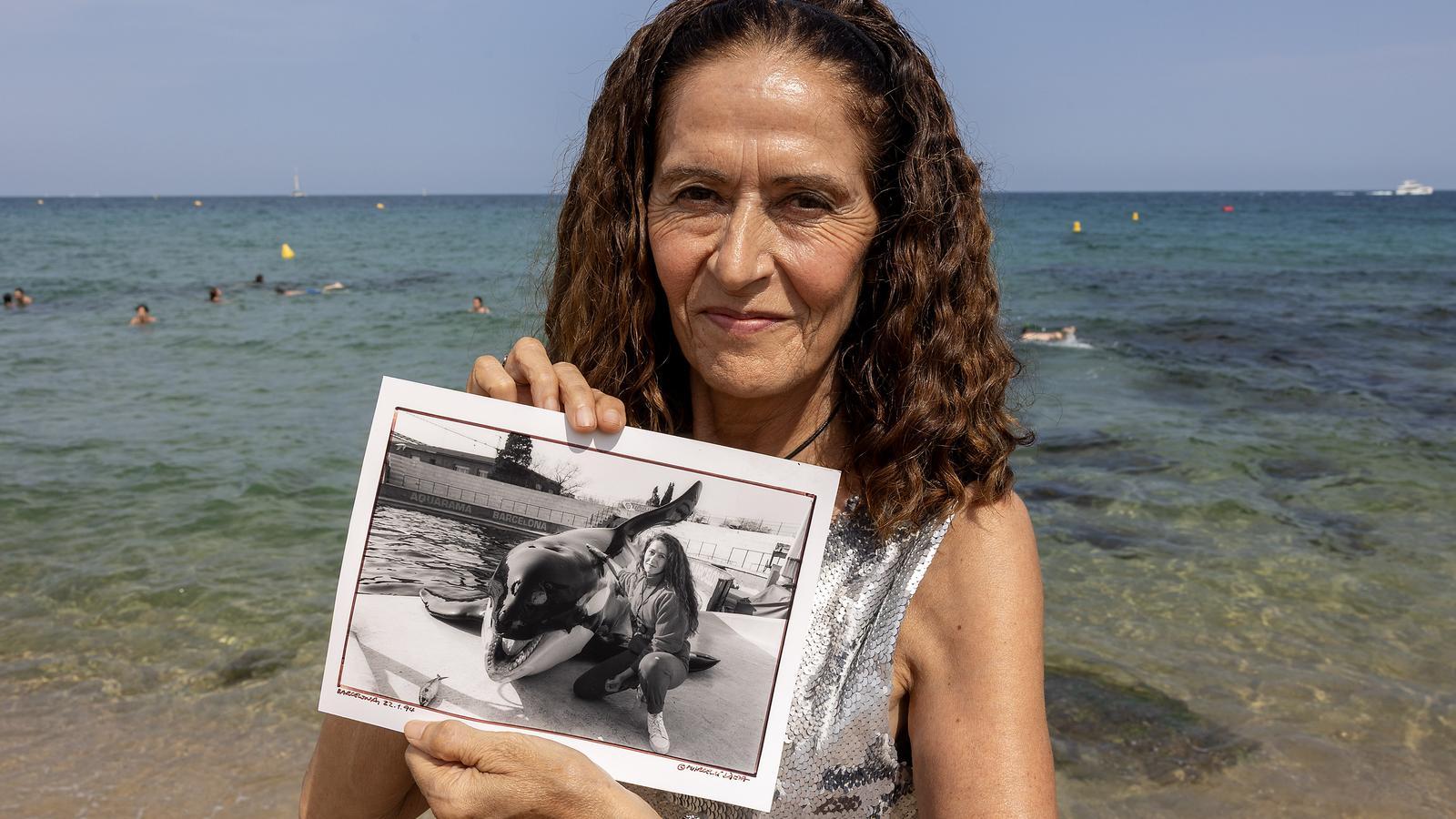"I thought I was going to die with Ulysses in a pool."
Emilia López, former keeper of the most iconic orca at Barcelona Zoo, recalls her past and talks about the future of zoos.


Imagine your eyes shining when you talk about the love of your life, yet at the same time you believe that loves like yours should never exist. This is what happens to Barcelona native Emilia López, who during her youth cared for (and loved) the most iconic orca of all time, Ulysses. "When I was young, I thought I'd die with Ulysses in a pool; he was the love of my life!" she recalls while showing old photographs from that time. She appears thirty years younger, with very long hair and the same intense gaze. What does she think now? "That dolphins and orcas shouldn't exist in captivity."
It all started because some friends who worked at the Barcelona Zoo told Emilia López, who was twenty-five years old and lived in the Sant Andreu neighborhood, that they were looking for someone who knew languages to present the marine mammal shows. At the time, Ulysses was a pup, and she didn't go into the water. But something captivated her, and she began training as a caretaker and trainer. Once she got into the pool with Ulises… she never came out again: she was with him for more than a decade. "The bond became very strong. It was like he was part of my family; he depended on us. If anything happened to him, I would die!" she recalls, highlighting the bonds that caretakers form with their animals. But Ulises grew and grew...
"We caretakers were the ones who most asked for him to leave the zoo!" López exclaims. "When you really love someone, you want them to be okay, whether human or animal," she adds. Ulises weighed four tons and his tail touched the bottom. Finally, the animal was flown to the United States on an extremely delicate journey, which she experienced firsthand. It's inevitable to ask her about the other animals that still exist at the Barcelona Zoo today. She still works.
Emilia López is eager to answer: "Many people say the Zoo should close, but what do we do with the animals we already have? Do we kill them? Zoos are from another century and need to change. I think they should become animal recovery and outreach centers," she concludes. She also explains—"because I think many people don't know this"—that in Barcelona they're already doing "interesting things" in this direction: "Our elephants and many chimpanzees come from circuses. We also have animals that have been victims of wildlife trafficking and come from confiscated species, and we're breeding species like turtle doves." If she were 25 again, she insists, she wouldn't do exhibitions with Ulises again. The model must be different.
For a few years now, Emilia López has been a bird keeper. She no longer spends hours in the water. She works among calaves, Socorro doves, and other birds, like macaws, which are in serious danger of extinction. She has gone from the aquatic environment to caring for animals that love her. From being with an animal that weighs tons to feeding species just a few centimeters tall. But no matter how things change and the years pass, there is one date that this Barcelona-based caretaker still has etched in her memory. She closes her eyes, directs them toward nothingness, and dictates, little by little: "February 9, 1994." It is the day Ulises left the Barcelona Zoo. He was not even 20 years old then. Now he is almost 50. More than three decades later, he is still doing laps in one of the pools at SeaWorld San Diego, in the United States.
